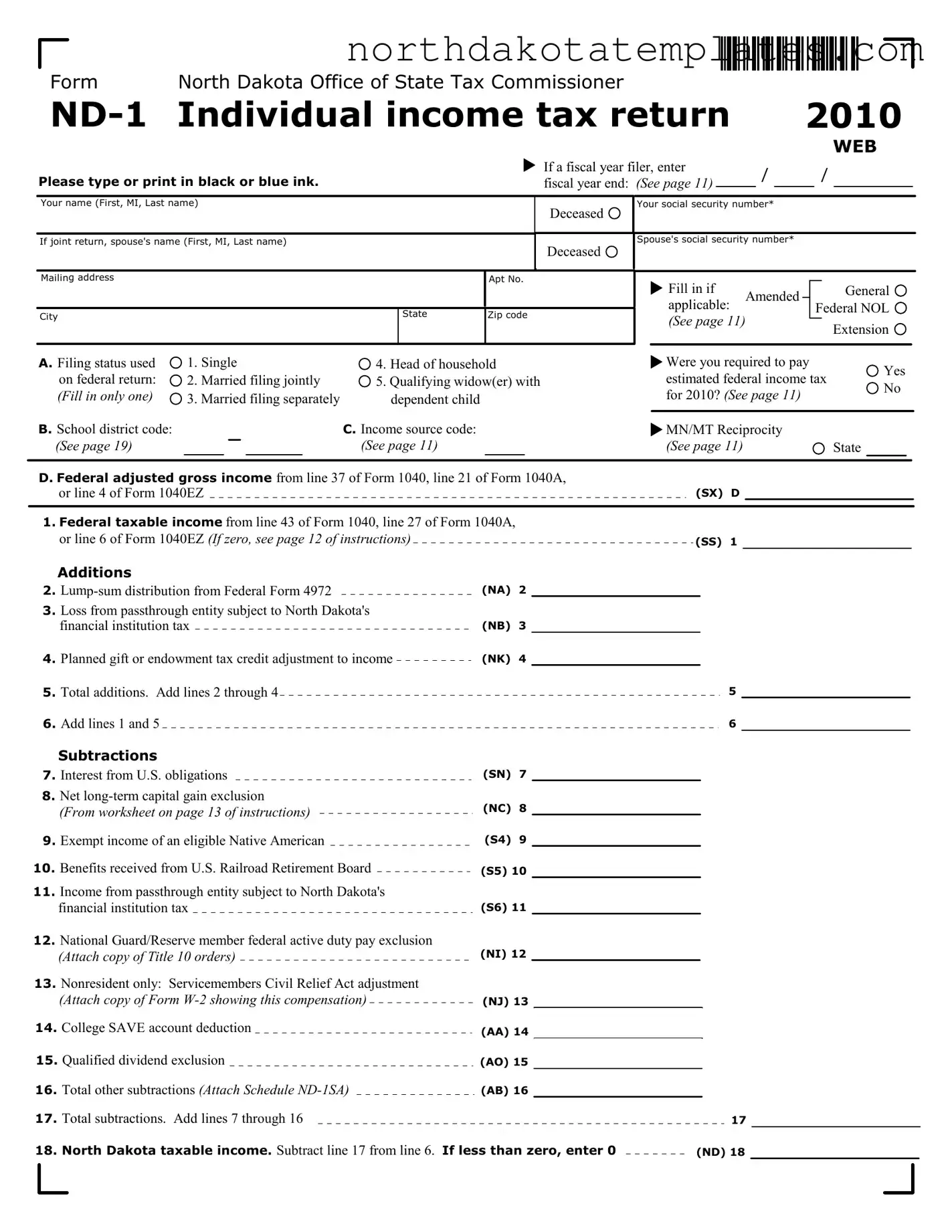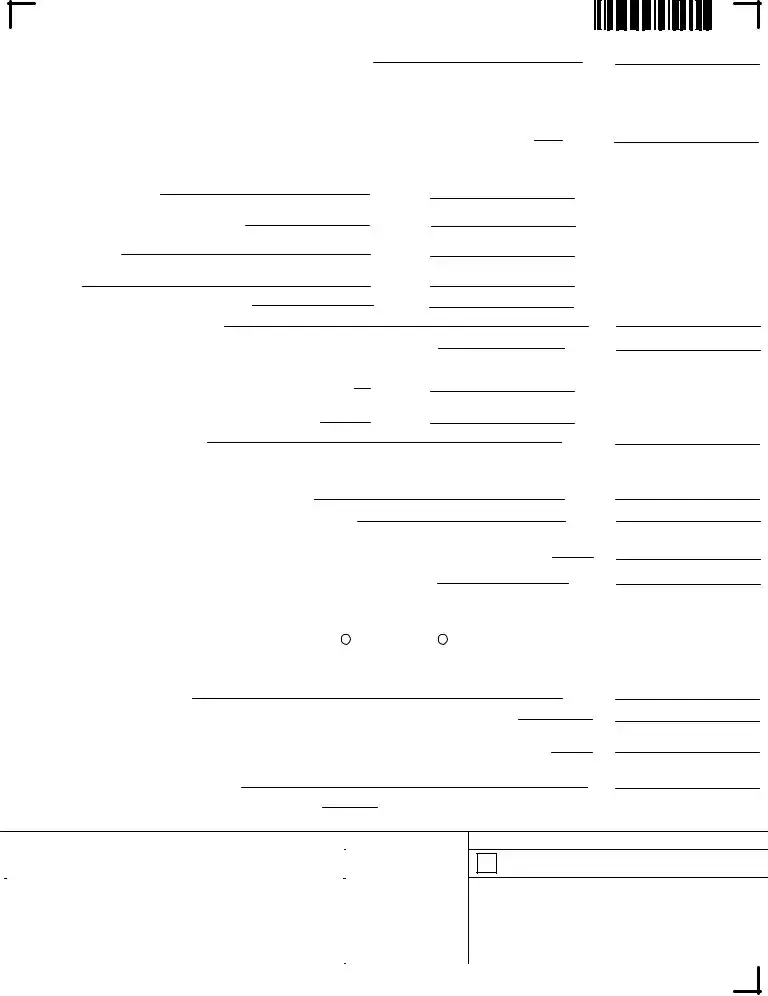Filling out the ND-1 form can be a daunting task, and it’s easy to make mistakes. One common error is neglecting to provide the correct social security numbers for both the taxpayer and the spouse, if applicable. This information is crucial for the tax authority to process the return accurately. If these numbers are missing or incorrect, it can lead to delays or complications in processing the return.
Another frequent mistake is failing to select the appropriate filing status. Taxpayers often overlook this step, which can significantly impact the overall tax calculation. The form provides multiple options such as single, married filing jointly, or head of household. Choosing the wrong status can result in incorrect tax liabilities.
Many individuals also forget to report all sources of income. It’s important to ensure that all income sources are accounted for, including wages, interest, and any other earnings. Leaving out income can lead to penalties or audits down the line.
Another area where errors often occur is in the additions and subtractions section. Taxpayers sometimes miscalculate these figures or fail to include relevant deductions. It’s essential to carefully review each line to ensure that all calculations are accurate and that all applicable credits and deductions are claimed.
Additionally, some filers may neglect to sign and date the form. This may seem minor, but an unsigned return is considered incomplete and can be rejected. Both the taxpayer and the spouse, if filing jointly, must provide their signatures.
Many people also overlook the requirement to attach necessary documents, such as W-2s or other income statements. Not including these documents can delay processing and may lead to additional inquiries from the tax office.
Another common mistake is not checking the mailing address. If you’ve moved recently, ensure that the address on the form is current. An incorrect address can result in important correspondence being sent to the wrong location, leading to missed deadlines or notices.
Finally, individuals sometimes fail to read the instructions thoroughly. Each section of the ND-1 form has specific guidelines that must be followed. Skipping over these instructions can lead to errors that could have been easily avoided. Taking the time to read and understand the form can save a lot of trouble in the long run.





